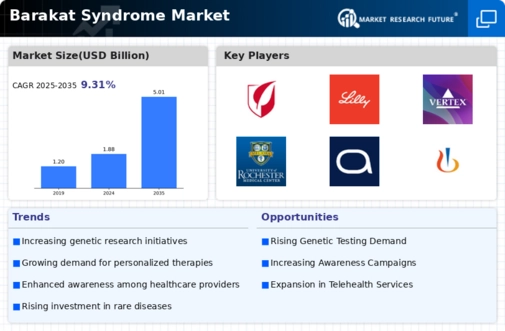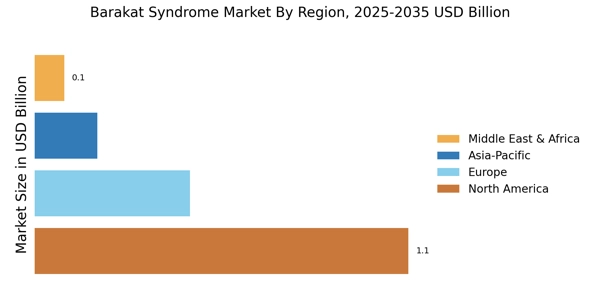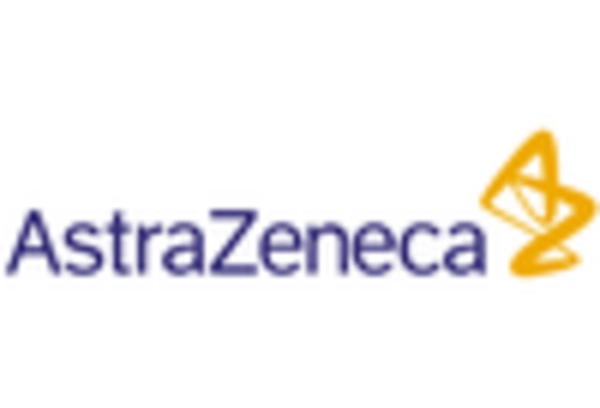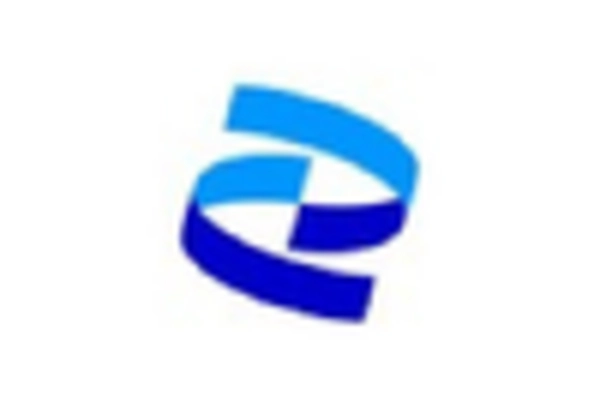Rising Awareness of Rare Diseases
The increasing awareness surrounding rare diseases, including Barakat Syndrome, is a pivotal driver for the Barakat Syndrome Market. As healthcare professionals and the general public become more informed about the symptoms and implications of rare genetic disorders, there is a growing demand for diagnostic tools and treatment options. This heightened awareness is likely to lead to earlier diagnosis and intervention, which could improve patient outcomes. Furthermore, advocacy groups are actively promoting education and research funding, which may enhance the visibility of Barakat Syndrome. The market for rare disease treatments is projected to grow significantly, with estimates suggesting a compound annual growth rate of over 10% in the coming years. This trend indicates a robust potential for the Barakat Syndrome Market as stakeholders respond to the increasing demand for effective therapies.
Advancements in Genetic Testing Technologies
Technological advancements in genetic testing are transforming the landscape of the Barakat Syndrome Market. Innovations such as next-generation sequencing and CRISPR technology are enabling more accurate and efficient identification of genetic mutations associated with Barakat Syndrome. These advancements not only facilitate early diagnosis but also pave the way for personalized treatment approaches tailored to individual genetic profiles. The market for genetic testing is expected to expand, with estimates indicating a growth rate of approximately 15% annually. This surge in genetic testing capabilities is likely to drive demand for related services and products within the Barakat Syndrome Market, as healthcare providers seek to incorporate these technologies into routine clinical practice.
Increased Investment in Rare Disease Research
Investment in research and development for rare diseases, including Barakat Syndrome, is a significant driver for the Barakat Syndrome Market. Pharmaceutical companies and research institutions are increasingly allocating resources to understand the underlying mechanisms of rare genetic disorders. This trend is supported by government initiatives and funding programs aimed at fostering innovation in rare disease research. The market for rare disease therapies is projected to reach several billion dollars, reflecting the growing interest from investors and stakeholders. As more research is conducted, the potential for discovering novel treatment options for Barakat Syndrome increases, which may lead to a more competitive landscape within the Barakat Syndrome Market.
Regulatory Support for Rare Disease Treatments
Regulatory support for the development of treatments for rare diseases is a vital driver for the Barakat Syndrome Market. Regulatory agencies are increasingly recognizing the need for expedited pathways for drug approval, which can significantly shorten the time it takes for new therapies to reach the market. Initiatives such as orphan drug designations and priority review vouchers are designed to incentivize pharmaceutical companies to invest in rare disease research. This supportive regulatory environment is likely to encourage more companies to explore opportunities within the Barakat Syndrome Market, potentially leading to a wider array of treatment options for patients. As regulatory frameworks evolve, the market may experience accelerated growth, driven by the introduction of innovative therapies.
Collaboration Between Pharmaceutical Companies and Research Institutions
Collaboration between pharmaceutical companies and research institutions is emerging as a crucial driver for the Barakat Syndrome Market. These partnerships facilitate the sharing of knowledge, resources, and expertise, which can accelerate the development of new therapies. By pooling their strengths, stakeholders can navigate the complexities of rare disease research more effectively. Such collaborations are likely to enhance the pipeline of potential treatments for Barakat Syndrome, as evidenced by recent partnerships that have yielded promising results in clinical trials. The synergy created through these alliances may lead to a more dynamic and responsive Barakat Syndrome Market, ultimately benefiting patients through improved access to innovative therapies.


















Leave a Comment